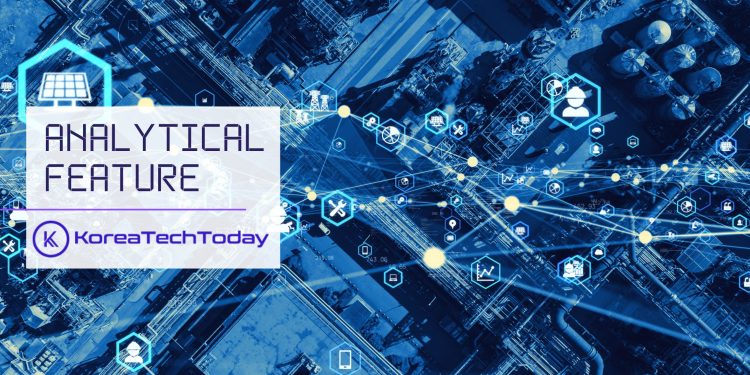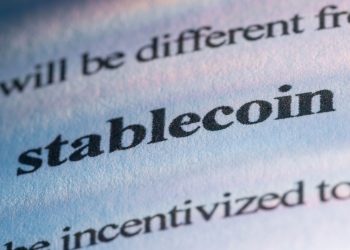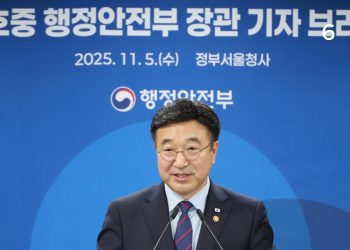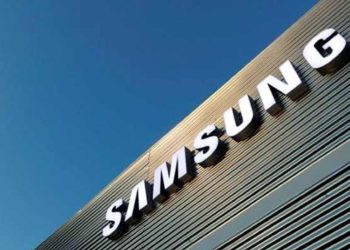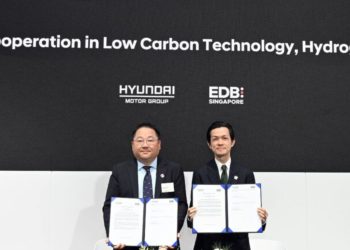Co-investment in chips, batteries and data centres is remaking how technology is built and moved — and redefining Korea’s strategic role in the global economy.
South Korea and the United States are shifting from traditional buyer-seller relationships toward integrated industrial collaboration. A wave of new investments and partnerships — from Korean semiconductor megaprojects in the U.S. to battery manufacturing and advanced data-centre infrastructure — is reshaping the physical backbone of the global tech industry. Governments on both sides are using subsidies, export controls and diplomatic channels to reroute supply chains, reduce dependence on single geographies and accelerate access to critical markets and customers. This emerging framework, which can be termed Supply Chain 2.0, aims to balance resilience with competitive advantage — but it also poses difficult strategic choices for companies and policymakers alike.
This article explores the evidence, drivers and trade-offs behind the U.S.–Korea industrial alignment. It examines where investment is flowing, how commercial partnerships are evolving and what success — or failure — might look like for Korea, a country long defined by export-led growth and global supply-chain integration.
Why the moment matters
For decades, global supply chains in high-technology manufacturing were optimized for cost and speed, often centering around East Asia and China. But recent disruptions — the COVID-19 pandemic, rising logistics costs, export-control regimes and the rapid growth of data-centre and AI demand — exposed structural fragilities. These include geographic concentration of key production, long supply-chain lead-times and challenges in meeting security and reliability demands.
In response, the U.S. introduced the Chips and Science Act and the Inflation Reduction Act, offering subsidies, tax credits and incentives to domestic and allied production of critical components. At the same time, export controls tightened on Chinese semiconductor imports, increasing the strategic value of manufacturing in trusted partner countries. South Korea, home to world-leading memory and logic makers, found itself at a crossroads: remain highly vulnerable to global logistics and regulatory risks, or reposition technology manufacturing in tandem with the U.S. and other allies.
For Korea, the stakes are high. Its tech giants are deeply integrated into global markets — in memory chips, smartphones, battery cells and displays — and the country’s export-driven economy relies heavily on both production and foreign demand. The movement toward joint U.S.–Korea investments and trade alignment thus represents a fundamental re-wiring of industrial geography and strategic posture.
The chip wave: Memory, logic and advanced packaging
In the semiconductor domain, Korean companies are among the most active in the new investment wave. For example, Samsung Electronics has committed billions of dollars toward a state-of-the-art fabrication plant in Taylor, Texas. The project is aimed at serving U.S. cloud and AI customers and qualifying for U.S. policy incentives. Meanwhile, SK Hynix is investing in advanced packaging and R&D operations in Indiana, backed by U.S. government grants of up to US$450 million. (Source: Reuters).
Simultaneously, chip-makers are securing supply deals with major AI developers. According to an announcement by OpenAI, its “Stargate” initiative will target up to 900,000 DRAM wafer starts per month — placing substantial orders with Samsung and SK Hynix.
For Korean firms, expanding manufacturing in the U.S. helps secure access to key cloud and AI customers, reduces exposure to future export restrictions and gives eligibility for subsidies. On the other hand, shifting manufacturing to the U.S. also increases capital costs, regulatory burdens and potentially dilutes domestic ecosystem linkages.
Batteries and electrified supply chains
While chips dominate the headlines, another major dimension of supply-chain realignment involves batteries and electrified mobility. Korean battery manufacturers — LG Energy Solution, SK On and Samsung SDI — are investing in North America to align production with U.S. automakers, qualify for clean-energy subsidies and respond to shifting EV procurement patterns.
Localizing battery cell production reduces logistics costs, ensures eligibility for domestic-content tax credits and strengthens strategic ties with major automakers. For Korean firms, proximity to demand is becoming as important as low-cost manufacturing. Yet this move also raises the cost of capital and forces firms to manage U.S. regulatory and labour environments that differ significantly from their domestic operations.
Data centres, cloud services and whole-system resilience
Resilience in tech infrastructure today means much more than chips and batteries. It includes data centres, power, cooling, shipping logistics, fiber networks and services. Korean conglomerates are advancing plans accordingly. Samsung, for example, signed a letter of intent (LOI) with OpenAI that covers the development of data-centre infrastructure and even floating data centres — leveraging ship-building and maritime engineering expertise to address land and cooling constraints.
Such initiatives reflect a systems-oriented view: AI infrastructure demands predictable energy supply, efficient cooling, high-speed connectivity and rapid deployment of physical assets. Korea’s industrial base — with strengths in ship-building, precision manufacturing and systems engineering — gives it a comparative advantage in bundling these capabilities into next-generation infrastructure.
Logistics and the industrial-services layer
A factory alone is not enough. Effective supply-chain resilience requires materials, tools, specialty gases, advanced packaging, workforce training and logistics networks. South Korea’s evolving strategy emphasises a “whole systems” model: manufacturing plus logistics, packaging, deployment and service support.
An example is SK Hynix’s Indiana project, which not only fabricaes modules but also strengthens local packaging and assembly capabilities, shortening the chain between fabrication and module shipping. (Source: Reuters)
For Korea, this means building not just factories, but ecosystems — localised clusters of manufacturing, logistics and service capabilities. It raises Korea’s strategic value, but also increases complexity and exposure to U.S. labour and regulatory regimes.
Policy drivers: incentives and export controls
The transformation is powered by two major policy levers. First, the U.S. push for allied-country manufacturing via the CHIPS Act and related state incentives. For example, the U.S. Commerce Department awarded Samsung up to US$4.745 billion under these programmes. (Source: Reuters)
Second, export controls aimed at China have raised the cost of maintaining supply-chain exposure without trusted jurisdiction. For instance, in September 2025 the U.S. revoked special export waivers for Samsung and SK Hynix’s Chinese facilities, underscoring risk for firms still reliant on China-based production. (Source: Reuters)
For South Korea, the policy environment presents a balancing act: deeper U.S. alignment can yield subsidies and market access, but may restrict China operations and place firms in the cross-hairs of geopolitical tensions.
What companies and governments say
Samsung framed its alliance with OpenAI as a move to bring together its semiconductor, data-centre, ship-building and maritime-technology strengths. As the company stated, “Samsung will bring together technologies and innovations across advanced semiconductors, data centres, shipbuilding, cloud services and maritime technologies.”
OpenAI’s leadership echoed this sentiment: “Korea has all the ingredients to be a global leader in AI — tech talent, infrastructure, strong government support and a thriving AI ecosystem.”
These statements underline the strategic ambition: Korean firms are not simply manufacturing components, they are offering systems and infrastructure.
How the model works
This supply-chain realignment is being executed through a multipronged strategy:
- Greenfield investments in factories near demand centres (e.g., Taylor, Texas; Arizona battery gigafactories).
- Advanced packaging hubs in allied countries (e.g., Indiana), shortening the path from die to module.
- Strategic partnerships and long-term supply deals (e.g., Stargate memory contracts).
- Service and infrastructure bundling, combining manufacturing with data-centre design, logistics and operations.
Each element reduces dependence on cost-only manufacturing models and embeds firms more deeply into customer ecosystems. But they also require sustained investment, talent and policy stability.
Risks and friction points
The strategy is ambitious, but it is not without pitfalls. Capital intensity is high — building a cutting-edge fab or battery plant can require tens of billions of dollars and years of lead-time. Delays or cost overruns threaten returns. Incentive regimes are subject to changing politics and might become unreliable. Export-control regimes add regulatory complexity. Market risk remains — if demand for AI or EVs softens, new capacity may remain under-utilised. Finally, Korea faces the geopolitical balancing act of aligning with the U.S. while maintaining access to the Chinese market. In one recent incident, Samsung and SK Hynix saw their shares drop as new U.S. export rules made production in China harder. (Source: Reuters)
What success looks like
If Supply Chain 2.0 works as intended, we should observe:
- Shorter lead-times and less risk in the production of high-value components for U.S. customers.
- A network of integrated data-centre infrastructure combining Korean manufacturing strengths with U.S. demand centres.
- A deeper domestic U.S. supply-chain ecosystem for critical components like packaging, test, power and communications.
- A policy framework that balances industrial subsidies with open trade and avoids subsidy competition spirals.
For Korea, achieving this means shifting from being primarily a manufacturing node to becoming an integrated industrial partner in global systems.
Policy and business recommendations
For policymakers and corporate leaders focused on long-term structural gains:
- Link subsidies and tax incentives to measurable resilience outcomes, e.g., localisation of critical tests and packaging.
- Invest in cross-border R&D and workforce training, especially in allied countries, to build industrial depth.
- Establish interoperable standards and contingency protocols that survive diplomatic shifts and export-control changes.
- Promote private-public consortia for infrastructure deployment (data centres, power, logistics) that transcend individual company risk.
These steps can help translate headline partnerships into durable capability and ecosystem strength.
Conclusion
The U.S.–Korea industrial alignment represents a major pivot in how high-tech supply chains will be constructed in the coming decade. South Korea brings manufacturing scale, engineering know-how and global brand strength; the U.S. offers demand access, policy support and trusted partner status. If the two sides can integrate commercial logic with public-policy structure, they could build a new model of global technology cooperation — one defined not just by low cost, but by resilience and strategic value.
The next several years will be the operational test. All the announcements, LOIs and investment pledges are now moving into execution: fabs must open, batteries must scale, packaging must shorten the time-to-market, and data centres must handle AI workloads at scale. If those pieces align, Korea and the U.S. may succeed in building the supply‐chain architecture for the next era of technology. If not, much of the exercise will still provide critical lessons about industrial policy and technology competition in an increasingly divided world.

